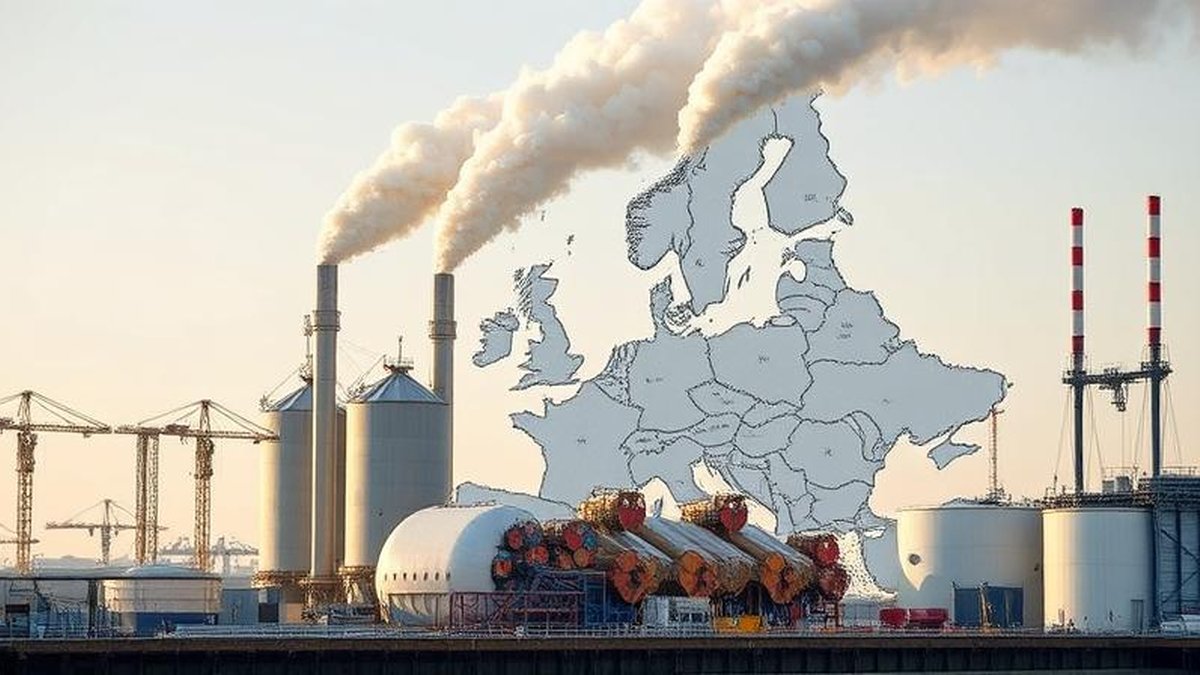Eurozone Industrial Production Beats Expectations Amid Export Rebound
Industrial production across the euro area delivered an unexpected upside surprise in July, offering a rare bright spot for the region’s manufacturing sector. According to Eurostat data, output rose 1.4% month-on-month, outperforming consensus forecasts and reversing several months of sluggish readings. The rebound underscores the growing role of external demand — particularly from Asia and North America — in stabilizing Europe’s industrial base amid persistent domestic headwinds.
1. External Demand Drives Recovery
The latest figures reveal that export-oriented sectors are leading the resurgence. Machinery, automotive, and chemical industries posted the strongest gains, reflecting renewed orders from major trading partners including China, South Korea, and the United States. Analysts attribute the improvement partly to global supply chain normalization and easing logistical bottlenecks that had constrained European output through much of 2023 and early 2024.
With Asian economies rebuilding inventories and North American manufacturers expanding procurement to diversify supply sources, European producers have benefited from stronger foreign demand. The rebound in semiconductors and capital goods orders, in particular, signals that Europe remains an integral part of global value chains despite recent competitiveness challenges.
2. Sectoral Breakdown Highlights Industrial Strengths
Across sectors, machinery and equipment manufacturing surged nearly 2.3% month-on-month, supported by export contracts linked to renewable energy infrastructure and precision engineering. Automotive production rose 1.7%, driven by overseas orders for electric vehicle components and hybrid systems. The chemicals segment gained 1.5%, aided by restocking demand in Asia’s consumer and industrial goods supply chains.
By contrast, energy-intensive sectors such as basic metals and construction materials posted more modest gains, constrained by elevated energy costs and uneven domestic investment trends. Analysts note that the mixed picture reflects an ongoing bifurcation: globally competitive, high-value manufacturers are outperforming, while local-demand-dependent sectors continue to lag.
3. Domestic Demand Still Lags Behind
Despite external tailwinds, domestic consumption and investment remain subdued in several member states. High borrowing costs, persistent inflation in services, and cautious business sentiment have weighed on internal demand. Household spending in Germany and France has yet to recover fully from the inflation shock, while Southern European economies face structural challenges in productivity and credit conditions.
Economists argue that without a stronger domestic impulse — from fiscal investment or real wage gains — the industrial rebound could remain uneven. Nonetheless, the export-led uptick provides breathing space for policymakers as they navigate delicate trade-offs between inflation control and growth support.
4. Policy Implications and ECB Considerations
The European Central Bank (ECB) will likely view the stronger production data as a sign of resilience but not a reason to shift its cautious stance. Core inflation, particularly in services, remains sticky, and policymakers have signaled that interest rates will stay restrictive until clear disinflation trends emerge. The rebound in manufacturing may ease recession fears but could also complicate the inflation outlook if it feeds into labor demand and wage pressures.
Fiscal policy, meanwhile, remains a crucial variable. Several governments have announced targeted industrial subsidies, green investment incentives, and export credit facilities aimed at sustaining competitiveness. These measures could reinforce momentum in strategic sectors like clean technology, aerospace, and advanced materials.
5. Global Trade Environment: A Double-Edged Sword
While exports are currently a growth engine, the outlook remains sensitive to global conditions. Trade tensions, shifting supply chains, and geopolitical risks — particularly in the Red Sea and Taiwan Strait — could disrupt flows. Moreover, U.S. industrial policy and China’s domestic rebalancing may alter demand patterns for European goods over the medium term.
For now, global demand appears supportive. Leading indicators such as Asian PMI new orders and U.S. capital goods imports point to sustained appetite for high-quality European manufacturing. The challenge for policymakers will be ensuring that competitiveness gains are preserved through innovation, digitalization, and energy transition investments.
6. Market Reaction and Investor Sentiment
Equity markets responded positively to the July figures. European cyclical sectors — including industrials, materials, and automotive — outperformed, while the euro strengthened modestly against the dollar. Bond yields were largely stable, suggesting that investors view the data as growth-positive but not inflationary enough to trigger further ECB tightening.
Portfolio strategists highlight that stronger industrial performance could bolster earnings for export-heavy corporates, particularly in Germany and the Netherlands. However, they caution that sustainability will depend on whether momentum extends into the autumn months amid energy price volatility and soft consumer spending.
7. Structural Trends and Long-Term Outlook
The July rebound fits within a broader narrative of industrial realignment in Europe. Companies are accelerating automation, nearshoring supply chains, and investing in green manufacturing to enhance resilience and competitiveness. EU-level initiatives — including the Green Deal Industrial Plan and Net-Zero Industry Act — aim to catalyze capital expenditure in strategic sectors.
Yet challenges persist: labor shortages, regulatory complexity, and divergent fiscal capacity across member states continue to constrain uniform recovery. Analysts suggest that sustained growth will require not only export demand but also structural reforms to boost innovation, reduce energy dependence, and harmonize industrial policy frameworks.
Key Takeaway
Eurozone industrial production’s surprise upside in July signals renewed vitality in the region’s export engine. Stronger demand from Asia and North America, coupled with supply chain normalization, has lifted key manufacturing sectors. However, domestic demand softness and policy uncertainty remain headwinds. To transform this rebound into a durable recovery, Europe must leverage external momentum while strengthening internal drivers through investment, reform, and energy competitiveness.
For more insights into European economic trends, trade dynamics, and manufacturing policy, visit our Altcoin Analysis | Exchanges | Apps & Wallets
